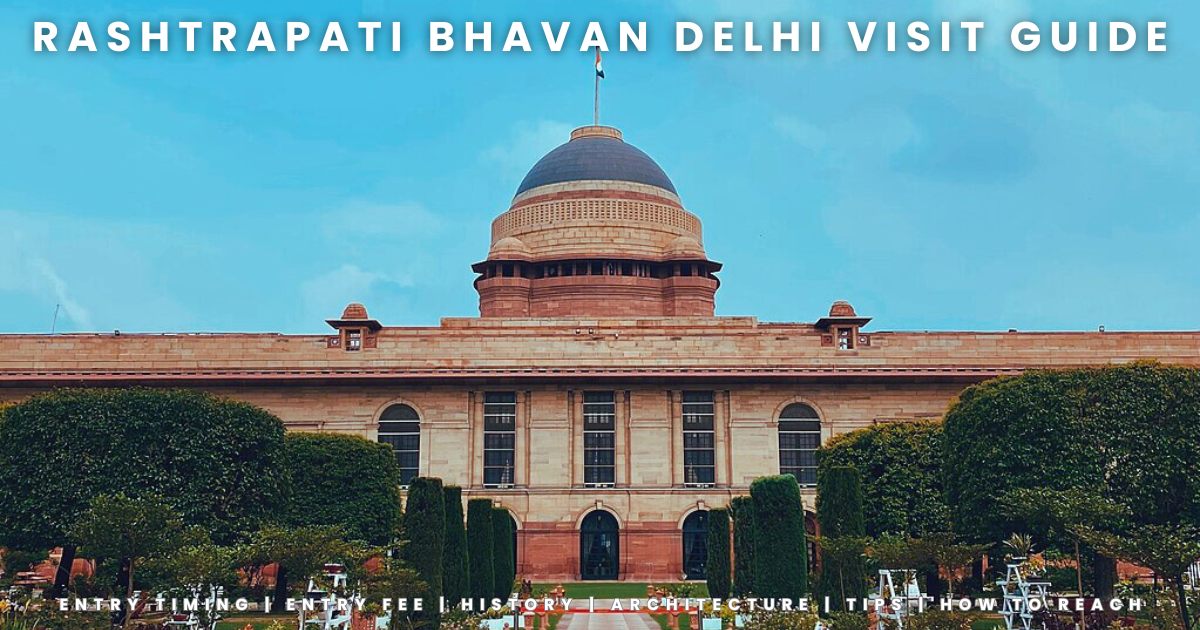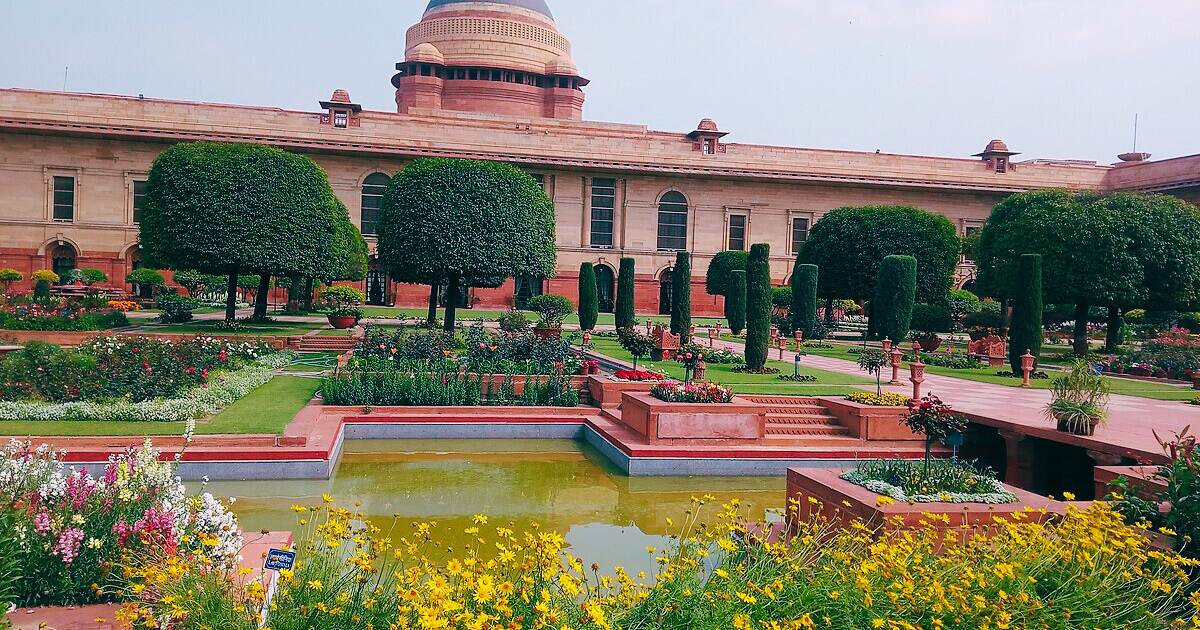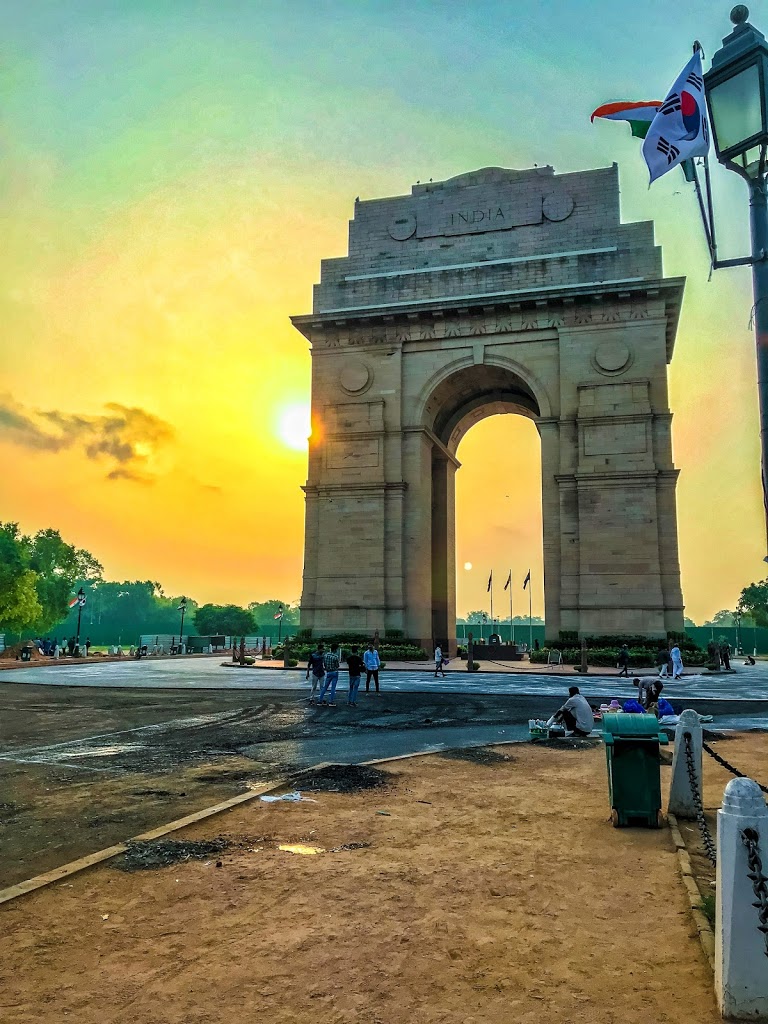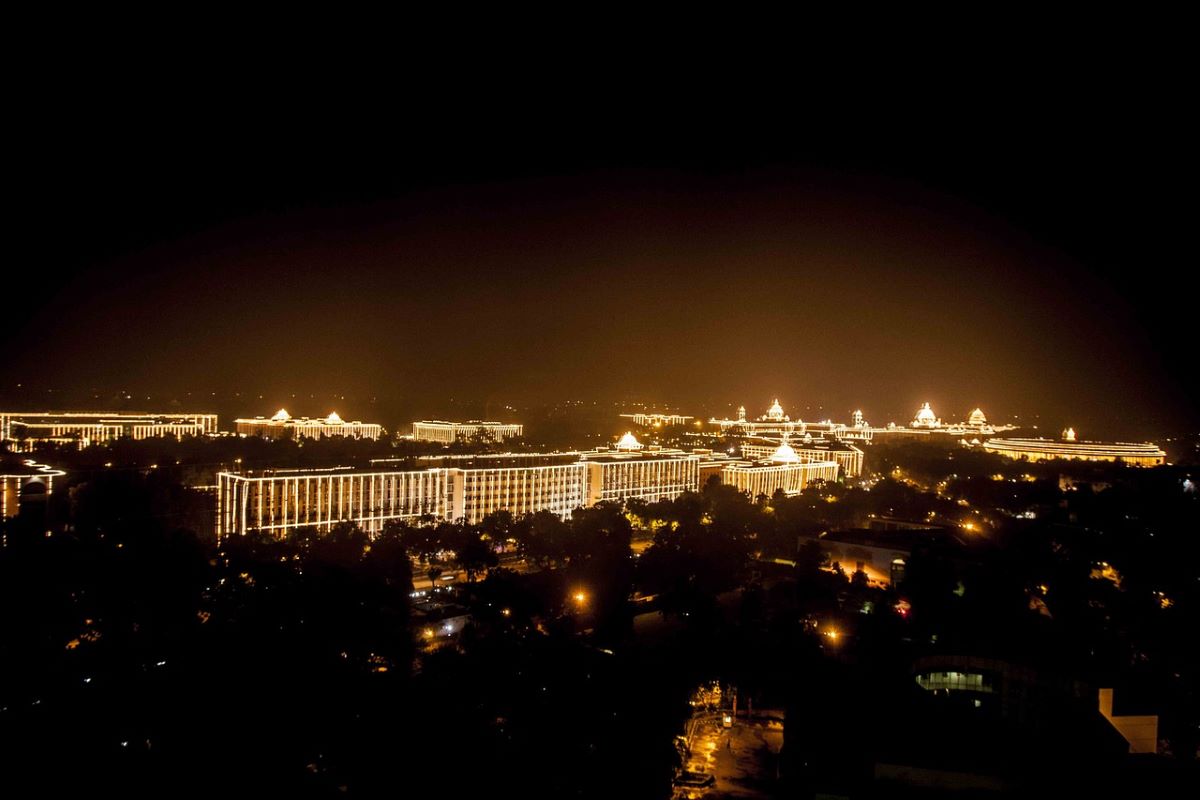Delhi Rashtrapati Bhavan Opening Days for Visit:
Rashtrapati Bhavan Delhi open for public on Tuesday to Sunday, closed on Mondays and Gazetted Holidays.
Rashtrapati Bhavan Main Building Entry Timing, Entry fee & Booking:
Entry Timing – Total 7 slots available per day from 9:30 AM to 4:30 PM; entry closes at 4:00 PM (60 persons per slot).
Entry Fee –
| Indian (8 years and above) | INR 50 |
| Indian (Below 8 years) | INR 0 |
| Foreigner | INR 50 |
Booking through this website – LINK
Rashtrapati Bhavan Museum Entry Timing, Entry fee & Booking:
Entry Timing – Five slots available per day from 9:30 AM to 5:00 PM; entry closes at 4:00 PM (250 persons per slot).
Entry Fee –
| Indian (8 years and above) | INR 50 |
| Indian (Below 8 years) | INR 0 |
| Foreigner | INR 50 |
Booking through this website – LINK
Amrit Udyan (formerly Mughal Gardens) Entry timing, Entry Fee & Booking:
The Amrit Udyan open to the public from February 2 to March 30, 2025. People can visit the all day of the weak except Monday because it is a maintenance day and the entry time is 10 am to 6 pm (last entry at 5:15 PM). Visitors can enter the Gardens through Gate No. 35 of Rashtrapati Bhavan on North Avenue Road.
Entry Fee – Free Entry
Booking through this website – LINK
Also Read: Best Water Parks in Delhi-NCR To Have Fun with Your Family
Rashtrapati Bhavan Delhi Location:
President’s Estate, New Delhi, Delhi 110004, India ← (MAP)
Rashtrapati Bhavan, Delhi Overview
Located on the western end of the Rajpath in New Delhi, the Rashtrapati Bhavan is the official residence of the President of India. An excellent and monstrous pilgrim building that is additionally the most terrific residence in the country (yet covered in mystery). It was originally built with the intent of serving because the Viceroy’s House. Built by the famous architects, Sir Edwin Lutyens and Herbert Baker, the H-shaped building covers an area of 5 acres on a 330 acre estate, which is huge. The construction saw completion within the year 1929 and now stands today as a magnificent symbol of all that India is.
Rashtrapati Bhavan consists of three circuits or sections, and all three are open to visitors at explicit occasion’s openings throughout the day. The first one is the Main Building and Central Lawn, where you can spectate the architecture first-hand. The second circuit is that the Rashtrapati Bhavan Museum complex, which features a number of buildings within its own perimeter. The third circuit comprises of the marvelous Mughal Gardens which is a paradise of elegant gardens and plush greenery. Visit the Rashtrapati Bhavan for a marvelous acquaintance with all that is splendid and awe-inspiring. It’s definitely a place you’d want to visit.
Also Read: 11 Best Romantic Places in Delhi | Location, How to Reach, Timings
Rashtrapati Bhavan Delhi History:
Following the decision to relocate the capital of British India from Calcutta to Delhi in 1911, there was a need for the construction of a new residence for the Viceroy of India. Sir Edwin Lutyens, a British architecture, was given the obligation to design the new capital of Delhi and structure the Viceroy’s residence.
Around 4,000 acres of land was acquired on the Raisina Hill. The construction of the grand residence began in 1911 under the supervision of Lutyens and Herbert Baker, his partner in the project. It was supposed to be completed within 4 years but due to the First World War, the construction was delayed.
About 17 years later, the huge mansion was built in 1929 and it cost about 14 million Indian rupees to build. Over 23,000 laborers were engaged in its construction and the last stone was laid by the Lord Irwin then Viceroy and Governor General of India. Incidentally, he became the first occupant of this newly built residence on 6th April 1929. The place was first known as the Viceroy’s House because it was as a symbol of Viceroy’s abode and imperial domination. The building was renamed the Government House in 1947 when India gained independence. Chakravarti Rajagopalachari was the first Governor General of Post-Independence India and he became the first Indian to occupy it.
Rashtrapati Bhavan Delhi Architecture:
Undoubtedly, the Rashtrapati Bhavan is an imposing and admirable work of engineering. This H-shaped building consists of four floors with 340 rooms and the floor area spans over a massive 200,000 square feet. You might find it surprising that barely any steel was used in the whole structure.
Lutyen’s design was largely classical inspired by Indian architecture. Several classical Indian motifs have found a look in the architectural style, such as royal elephants to round stone basins and Rajasthani sketches are displayed in red sandstone designs outside the jalis design. The main building has a drawing room, ballroom, library, dining room and private apartments.
The Durbar Hall, which is a significant setting for all the ceremonies inside the Rashtrapati Bhavan has a vault that estimates 22.8 meters in distance across and is set apart with different coloured marbles. The Viceroy’s throne is present in the hall and is a quiet view to see.
Among the most particular highlights of the Rashtrapati Bhavan is its focal vault. Visible even from a distance, its vault is double the tallness of the structure and has the National Flag flying over it. While Lutyen’s, the main draftsman of the Rashtrapati Bhavan, conceded that the motivation for the arch’s structure originated from the Pantheon in Rome, numerous specialists have likewise discovered likenesses between the vault and the incomparable Stupa at Sanchi, an antiquated Buddhist landmark in Madhya Pradesh.
Also Read: Best Places To Visit In Delhi | Things to do in Delhi
The Mughal Gardens of Rashtrapati Bhavan Delhi:
One of the greatest highlights of the Rashtrapati Bhavan is the rambling presidential garden, also known as Mughal Gardens. Spread more than 15 acres of land, this garden draws inspiration from the Taj Mahal gardens, the Mughal Gardens in Jammu and Kashmir, and the scaled down artworks from Persia and India.
A variety of flowering plants is supported in this garden, including 159 assortments of roses. This garden is appropriately called the soul of the Rashtrapati Bhavan. Consistently, from the month of February to March, Udyanotsav is held here during which the garden is opened for public.
Rashtrapati Bhavan Delhi Main Museum:
There is a museum inside the Rashtrapati Bhavan premises that was devoted to the general population by Pranab Mukherjee on July 2014. It provides you a brief look into the historical backdrop of the building, including its specialty, stylistic theme, design, and lives of the presidents who have lived here.
Also Read: Full Information about Shopping in Chandni Chowk Market Delhi
Things to See in the Rashtrapati Bhavan Complex:
The Rashtrapati Bhavan is a rambling complex with many energizing structures and attractions inside it. Contingent upon the circuit you pick, you can explore the following places:
Circuit 1 (Central Lawn & Main Building):
- Forecourt
- Central Lawn
- Central Dome
- Banquet Hall
- Durbar Hall
- Library
- North Drawing Room
- Iron Gate
- Tuscan Pillars
- Jaipur Column
- Ashok Hall
- Navachara
- Long Drawing Room
Museum (Circuit 2):
- The Clock Tower
- The Stables
- The Garages
3 no – Circuit (Amrit Udyan)
- Mughal Gardens
- Herbal Garden
- Musical Garden
- Spiritual Garden
Travel Instructions for Visiting Rashtrapati Bhavan Delhi:
The circuits of Rashtrapati Bhavan are open only on certain days for the general public. So check out the rules below before visiting this presidential place.
1. The entrance to the Rashtrapati Bhavan is between Gate No. 2, Gate No. 37, and Gate No. 38.
2. Must carry a valid photo ID Cards of an Indian Citizens. Foreign tourists need to submit photocopies of their passport and are required to carry their original passport for identification on the day of the visit.
3. President’s Secretariat may approve/reject the authorization to visit Rashtrapati Bhavan upon its circumspection.
4. You can contact the Management Cell at:-
- Telephone: 011- 23013287, 23015321
- Fax No. 011- 23015246
- Email: reception-officer@rb.nic.in
How to Reach Rashtrapati Bhavan Delhi:
The closest Metro Station is the Central Secretariat metro station, which falls on the Blue Line. You can book an autorickshaw or taxi from outside the station. Also, you can reach Rashtrapati Bhavan by taking the DTC transport or taxi that runs normally from each point in the city.
| Nearest Metro Station: – | Central Secretariat metro station |
| Nearest Railway Station: – | New Delhi Railway Station at a distance of nearly 5.6 kilometres. |
| Nearest Bus Stand: – | Rashtrapati Bhavan bus stand |
| Nearest Airport: – | Indira Gandhi International Airport |
Hope you liked this article on Wonderla Bangalore. So please do share your views with me within the comments section below. If this article was helpful, do share this post with your friends on Facebook and Twitter. It would mean a lot.
Hey there! I’m Santu Chakraborty and I’m not your typical traveler. By day, I wrangle circuits and solve electrical mysteries as an engineer, but my true passion lies in exploring the world and sharing those experiences with you. For the past five years, this blog has been my canvas, where I paint stories of adventure, practical travel tips, and cultural insights to ignite your wanderlust. So, come join me on my journeys and discover the magic that awaits just beyond the horizon!








Nice 🙏